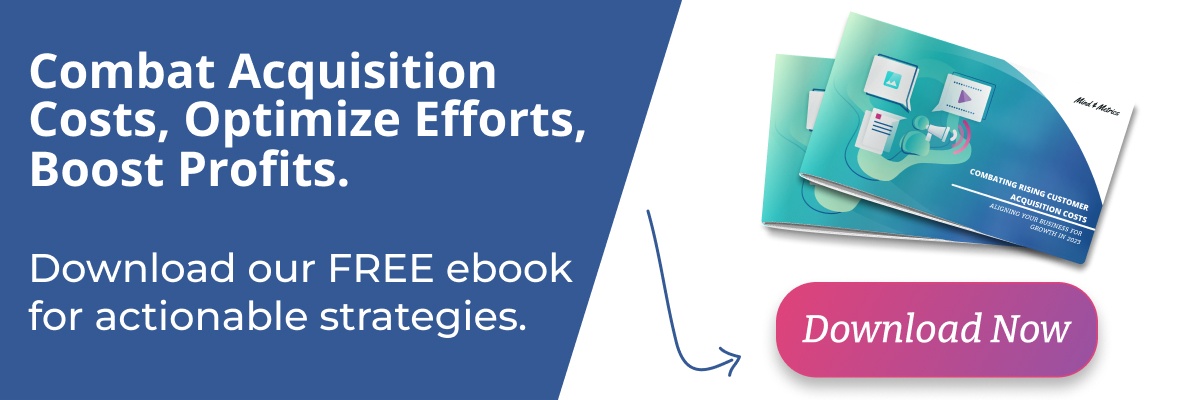Experience firsthand how Mind & Metrics + Supered.io can help your business streamline execution, eliminate unnecessary back-and-forth, and ensure AI accelerates growth—without the chaos.
Feedback vs. Review: Why are Customer Survey Responses Better than Reviews?
You’ve done your market research, targeted your campaigns, and set up a (presumably) seamless purchase process. You’d think that’s all you need to do to keep your business humming along. But an important mantra in business is: Expect the unexpected.
No business, product, or service is perfect, and it’s impossible to please every customer. But understanding the customer experience post-purchase is crucial to the longevity of any organization.
The buyer’s journey doesn’t end when a customer clicks “Pay Now” in their checkout screen. Businesses need to know how customers are feeling post-purchase - Are they satisfied, or suffering buyer’s remorse?
Customer feedback helps companies bring additional context to the customer journey and gather helpful data. Closing the “feedback loop” provides invaluable insight into the reasons behind the behavior of their customers. Why are they buying, or not buying?
But what’s the best way to gain feedback - surveys, or reviews?
Customer feedback surveys and online reviews, though similar, are not the same. Both can help you understand customer sentiment, but are they equally beneficial for your business?
What’s the difference between surveys and reviews?
Reviews are publicly available online feedback about your product or service. They usually have the standardized 5-star rating system we’re all comfortable with. Reviews give you and other visitors to your online store an authentic glimpse into what receiving your product is actually like.
The biggest benefit of public reviews is that - if they’re positive - they build trust in brands, especially new brands. A 2021 report found that 88% of consumers worldwide consult reviews when discovering a local business. In addition, research by G2 states that 92% of consumers hesitate to make a purchase when there are no customer reviews available. It's clear that reviews are becoming an increasingly important factor in the beginning stages of the buyer’s journey.
On the other hand, customer feedback surveys are private questionnaires delivered to customers during or post-purchase, typically through email or a website pop-up. Unlike reviews, surveys help establish a direct relationship between the business and consumer. They open a communication channel for customers to provide their honest feedback. They also allow for more granular and systematic data collection via the use of industry-standard question types like NPS and customer satisfaction surveys.
While reviews are an effective marketing tool, surveys give you more opportunities to use data to your advantage and affect real change. Reviews matter more for how others perceive your company, while surveys help inform internal strategy.
What are the benefits of surveys?
Asking your customers for feedback can be daunting, but remember that even if the feedback is negative (and surely some will be, since you can’t please everyone) it provides an opportunity to improve. Think of criticism as a contingency plan. Even if a business venture doesn’t pan out like you hoped, customer feedback allows you to learn from the experience and apply this knowledge towards future success.
Don’t assume that unhappy customers will let you know they’re dissatisfied. The saying “No news is good news” doesn’t apply here. According to research by customer strategist Esteban Kolsky, only 1 out of 26 unhappy customers complain. The rest quietly churn. Companies shouldn’t take an absence of feedback as a sign that customers are satisfied.
Surveys are an excellent way to help your company grow better. Let’s get into some of the reasons why.
Gain feedback without risk to public reputation
Public reviews do help you gauge how your customers are feeling, but the public nature of them can be a downside. It’s important to know about any issues your customers are experiencing, but having criticisms about your company posted on the internet forever, for all to see, can take a toll on your reputation.
Even if you’ve noted the complaints and made efforts to address them, public reviews are forever. Potential customers who see any negative reviews targeted towards you may still find you less trustworthy and be discouraged from making a purchase.
Surveys let your customers be honest, and give you an opportunity to improve, without risking the public perception of your brand.
Gain specific customer feedback
While reviews gather general opinions about your brand, surveys allow you to add customized questions and drill down into specific issues. For example, if you just launched a new version of your website, you can find out how customers are liking it and identify precise areas of improvement.
There’s also industry standard question types that let you collect robust data & chart precise metrics like NPS score. Star ratings don't offer the same granularity.
Inform your customer retention strategy
Surveys give you a comprehensive overview of customer sentiment and allow you to gain a deeper understanding of the “why” behind customer behavior.
Maybe the product you thought would sell the most is being passed over in favor of one you thought would garner less demand. Or you’re getting a lot of new customers, but they’re not sticking around for multiple purchases. Knowing the reasons driving customer behavior is the first step to implementing positive change. Understand any frustrations your customers may run into, identify trends, and work on improving your offerings however you can.
They also help businesses predict future performance. If you’re not on the right trajectory, you can adjust your efforts to promote stronger growth.
Survey question ideas to get you started
Here’s a brief overview of common question types, and the benefits they can provide for your business.
NPS
Net Promoter Score (NPS) questions help measure customer loyalty using one question:
“How likely is it that you would recommend [Company/Product/Service] to a friend or colleague?”
Knowing the number of customers who are likely to promote your business to others is helpful for determining customer sentiment and predicting future performance of your brand.
Customer satisfaction
Customer satisfaction (CSAT) questions help you quantitatively measure customers’ opinions of you. CSAT questions normally take the form of:
How satisfied were you with [Company/Product/Service?
- Very unsatisfied
- Unsatisfied
- Neutral
- Satisfied
- Very satisfied
You can calculate CSAT score by finding the percentage of responses that scored 4 (satisfied) or 5 (very satisfied). You’ll then have a rough metric for overall customer sentiment.
Pro-tip: Leave room for elaboration
The main downside of NPS and CSAT scores is that they don’t factor in context. A good way to structure a customer survey starts with an industry standard question type, and leaves room for the customer to elaborate on their response.
If they indicated a low level of satisfaction, you should ask what you could have done better. If they scored highly, you’ll want to know what services of yours stand out. The combination of scores and explanations paints a full picture of customer sentiment and helps guide your customer retention efforts.
More ways to improve customer retention and acquisition
The best way to cater to your current and future customers is to determine what they respond to. Earning the attention of new leads is becoming more difficult and expensive than ever, with consumers less engaged in online ads and competition becoming increasingly steep. To find out how to boost your customer acquisition efforts while controlling costs, check out our free eBook.

